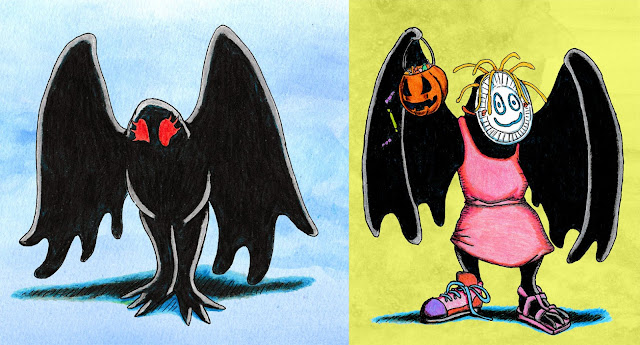Mention prehistoric animals and a person’s thoughts will
most likely go to dinosaurs. Then perhaps to the more popular Pleistocene
animals like mammoths, sabertooth cats, giant ground sloths. Maybe a fossil
enthusiast will think of ammonites and trilobites.
But there is so much more diversity to the 4 billion years
of life on Earth. Piles and piles of creatures deserving more attention. That’s
where Stanton Fink’s Register Prehistorica comes in.
Fink’s tome, which doubles as a coloring book, showcases an
eclectic mix of trilobites, pterosaurs, mammals, echinoderms, amphibians, and
even stranger beasts. The book covers a temporal range from the dawn of
multicellular life in the Ediacaran all the way to the 1800s.
Fink gives each creature its own character with interesting
anecdotes about unusual behavior, history of discovery, or odd name origins. See,
for example, the trilobite Triproetus bonbon- whose species name refers
to the French chocolate candies- because the creature’s extremely
well-preserved fossils were a “treat” to discover. Or the fearsome mesonychid
mammal Ankalagon saurognathus, which was named after a dragon from JRR Tolkien’s
Silmarillion.
Animal reconstructions are meticulously detailed, with
lavish attention given to each tooth, scale, and osteoderm. Many of the
illustrations are the first depictions of animals that are only known from a
few fragmentary bones or shell pieces buried in an academic paper.
The backgrounds, by contrast, are quite simple, often little
more than broad strokes to suggest scenery in the manner of a Japanese sumi-e
or a Chinese shui mo hua ink painting. This
juxtaposition can be a bit jarring at first, but the simple backgrounds help to
highlight the details of the subject animals without distracting from them.
 |
| Even cats like Register Prehistoria. |
Fink has drawn and written many, many more books covering
all sorts of obscure and fascinating prehistoric creatures. Register
Prehistoria is an excellent jumping-off point to discovering more of
Earth’s ancient diversity.
You can get a copy of Register Prehistoria here.
You can get a book of Stanton Fink's Ordovician animals here.
And a book of Carboniferous beasts here.
And, of course, Trilobites!
















